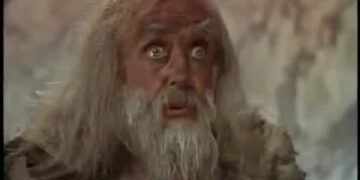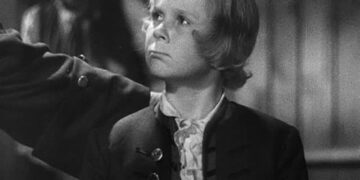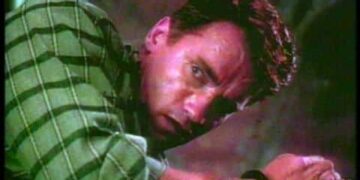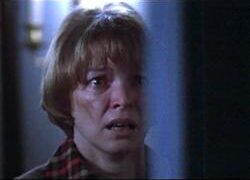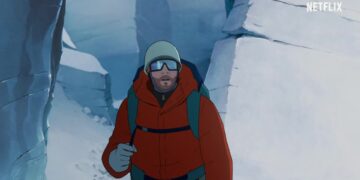Blade Runner is a seminal piece of science fiction cinema and one of the most influential films of all time. Directed by Ridley Scott and released in 1982, the film was inspired by the novel “Do Androids Dream of Electric Sheep?” by Philip K. Dick. In this article, we will delve into the world of Blade Runner, exploring its origins, key themes, and legacy, as well as providing a parent guide and tips for cosplay, among other topics.
Blade Runner: Movie summary and key themes
Set in a dystopian Los Angeles in 2019, Blade Runner tells the story of Rick Deckard (played by Harrison Ford), a retired “blade runner,” whose job is to track down and “retire” (kill) rogue replicants—bioengineered androids that are virtually indistinguishable from humans. Deckard is reluctantly pulled out of retirement to hunt down a group of dangerous replicants who have escaped from an off-world colony and come to Earth.
As Deckard tracks down each replicant, he is forced to confront questions about the nature of humanity and the ethics of creating artificial life. The film explores themes such as empathy, identity, and the fear of obsolescence, as well as the blurred line between human and machine.
Do Androids Dream of Electric Sheep?: Book summary and comparison with the film
Philip K. Dick’s novel “Do Androids Dream of Electric Sheep?” was published in 1968. It takes place in a post-apocalyptic world where Earth’s population has been decimated by a nuclear war, and most animals are extinct. In this world, owning an animal is a status symbol, and humans derive a sense of worth from their empathy toward these creatures. The story follows bounty hunter Rick Deckard, who is tasked with “retiring” six escaped Nexus-6 model androids.
While the film stays true to the book’s essential plot, there are several significant differences. The novel delves more deeply into the themes of empathy and the human-animal relationship, as well as exploring the concept of “kipple,” the accumulation of useless objects and waste in a decaying world.
A parent’s guide to Blade Runner: age-appropriate content and themes
Blade Runner is a complex, thought-provoking film that explores mature themes such as the nature of humanity, the ethics of creating artificial life, and the struggle for identity. The film contains violence, brief nudity, and some strong language, making it more suitable for older teenagers and adults. Parents should be aware that the film’s dark atmosphere and philosophical themes might be challenging for younger viewers to understand and might spark discussions about the ethical implications of technology and artificial intelligence.
The setting and timeline of Blade Runner: When and where it takes place
Blade Runner is set in a dystopian Los Angeles in the year 2019. The city is overcrowded, polluted, and perpetually dark, with oppressive megastructures and gigantic digital billboards dominating the landscape. The environment is heavily influenced by “cyberpunk” aesthetics, drawing from film noir and Japanese architecture. The film’s setting is integral to the overall atmosphere and themes, reflecting a society that has become dehumanized and disconnected from nature.
Exploring the film locations of Blade Runner
Many of Blade Runner’s iconic locations were filmed in and around Los Angeles. Some of the most recognizable settings include the Bradbury Building, which served as the home of J.F. Sebastian, a character in the film, and the Ennis House, the Mayan Revival-style residence designed by Frank Lloyd Wright that provided the exterior of Deckard’s apartment. Union Station was used for several interior scenes, while the 2nd Street Tunnel was a prominent location for the film’s noirish nighttime sequences.
Who’s who: Key characters and their roles
Blade Runner features a compelling cast of characters, each with their unique roles and motivations. Some of the key characters include:
- Rick Deckard (Harrison Ford): A former blade runner reluctantly pulled out of retirement to track down the escaped replicants.
- Roy Batty (Rutger Hauer): The charismatic and frightening leader of the escaped replicants, a Nexus-6 model with superior physical strength and intelligence.
- Rachael (Sean Young): An experimental replicant who believes she is human, and with whom Deckard forms a complex relationship.
- Gaff (Edward James Olmos): A mysterious and enigmatic blade runner who speaks in a cryptic language and creates origami figures.
- J.F. Sebastian (William Sanderson): A lonely and sympathetic genetic designer who befriends the replicants and helps them in their quest.
Memorable quotes from Blade Runner
Blade Runner is filled with memorable lines that have become iconic in their own right. Some of the most notable quotes include:
- “All those moments will be lost in time, like tears in rain.” – Roy Batty
- “It’s too bad she won’t live, but then again, who does?” – Gaff
- “I’ve seen things you people wouldn’t believe.” – Roy Batty
- “I’m not in the business. I am the business.” – Rachael
- “Wake up! Time to die!” – Leon Kowalski
The iconic soundtrack by Vangelis
The film’s evocative and atmospheric score was composed by Greek musician Vangelis. The soundtrack perfectly complements Blade Runner’s visual style, blending haunting synthesizer melodies with traditional orchestral elements and futuristic soundscapes. The result is a moody, immersive, and unforgettable auditory experience that has become synonymous with the film itself.
Uncovering curiosities and lesser-known facts
Blade Runner has a rich production history filled with fascinating tidbits and lesser-known facts. Some of these include:
- The film’s title, “Blade Runner,” was taken from a completely unrelated science fiction novel by Alan E. Nourse, with the author’s permission.
- During the famous “tears in rain” monologue, Rutger Hauer improvised much of the dialogue, adding a layer of depth and poignancy to the scene.
- The “spinner” vehicles used in the film were designed by Syd Mead, a legendary concept artist who also worked on films like “Tron” and “Aliens.”
- The term “replicant” was coined for the film, as the producers felt the word “android” was too closely associated with other science fiction works.
Tips for Blade Runner cosplay and dressing like the characters
Blade Runner’s unique visual style and memorable characters make it a popular choice for cosplay and costume enthusiasts. Here are some tips for recreating the look of the film’s characters:
- For Deckard’s iconic trench coat, search for a long, double-breasted coat with wide lapels and a belt.
- Roy Batty’s look can be recreated with a white button-down shirt, black pants, and a long black trench coat. Don’t forget the distinctive platinum blonde hair.
- Rachael’s signature style includes a 1940s-inspired suit with shoulder pads, a pencil skirt, and her trademark dark, wavy hair.
- Gaff’s outfit consists of a dark suit, a fedora with a wide brim, and a patterned tie. To complete the look, consider adding some of Gaff’s signature origami figures.
Philip K. Dick: A brief biography and overview of his works
Philip K. Dick (1928-1982) was an American science fiction writer known for his prolific output and exploration of philosophical and metaphysical themes. Some of his most famous works include “The Man in the High Castle,” “Ubik,” and “A Scanner Darkly.” Many of his stories have been adapted into films, such as “Total Recall,” “Minority Report,” and “The Adjustment Bureau.” Dick’s writing often delves into the nature of reality, the human condition, and the impact of technology on society.
Blade Runner’s ending explained: Interpretations and theories
The ending of Blade Runner is open to interpretation and has been the subject of much debate among fans and critics. One of the most popular theories is that Deckard himself is a replicant, a possibility hinted at throughout the film and further explored in Ridley Scott’s director’s cut. This interpretation adds an extra layer of complexity to the film’s themes of identity and the blurred line between human and machine.
The legacy of Blade Runner: Remakes, sequels, and spin-offs
Blade Runner’s influence can be seen in countless films, television shows, and books, as well as its own official sequel, “Blade Runner 2049,” released in 2017. The film also inspired a series of novels by K.W. Jeter that continue the story of Deckard and the world of Blade Runner. Additionally, there have been numerous comic books, video games, and other media that expand upon the film’s universe.
Other notable works by Ridley Scott
Ridley Scott is a prolific director with a diverse filmography spanning various genres. Some of his most famous works include “Alien,” “Thelma & Louise,” “Gladiator,” “Black Hawk Down,” “The Martian,” and “All the Money in the World.”
Similar media to Blade Runner and Do Androids Dream of Electric Sheep?
For fans of Blade Runner and its source material, there are many other films, books, and games that explore similar themes and aesthetics. Some recommendations include:
- “Ghost in the Shell” (film and manga)
- “Neuromancer” by William Gibson
- “Snow Crash” by Neal Stephenson
- “Akira” (film and manga)
- “The Matrix” trilogy
Book club discussion questions for Do Androids Dream of Electric Sheep?
- How does the novel explore the theme of empathy, and how does it relate to the characters and their actions?
- What role do animals play in the story, and what do they symbolize?
- How does the concept of “kipple” relate to the novel’s themes and worldview?
- How do the characters’ struggles with their emotions and memories shape their identities?
- How does the novel’s ending compare to the film’s, and which do you prefer?
The Voight-Kampff machine and Spinner: Iconic elements of Blade Runner
The Voight-Kampff machine is a device used in Blade Runner to detect replicants by measuring their empathetic responses. The test is a central element of the film’s story and themes. Similarly, the Spinner is an iconic vehicle from the film, a flying car used by police and blade runners. Both the Voight-Kampff machine and the Spinner have become emblematic elements of the Blade Runner universe and have been referenced and parodied in numerous other works.
Special effects and visual design in Blade Runner
Blade Runner is famous for its groundbreaking special effects and visual design, which continue to influence filmmakers and artists today. The film’s production designer, Lawrence G. Paull, and conceptual artist Syd Mead created a unique and immersive world that combined elements of film noir, Japanese architecture, and cyberpunk aesthetics. The film also made extensive use of practical effects, such as detailed miniatures and matte paintings, to create its stunning cityscapes and futuristic environments.
Blade Runner-inspired video games and interactive experiences
Blade Runner’s influence can also be seen in numerous video games and interactive experiences, which draw upon the film’s themes and visual style. Some notable examples include the 1997 point-and-click adventure game “Blade Runner,” CD Projekt Red’s “Cyberpunk 2077,” and the “Deus Ex” series. These games allow players to immerse themselves in the dystopian worlds and confront the ethical and philosophical dilemmas presented in the film.
A travel guide to visit Blade Runner filming locations
For fans who want to visit the real-life locations featured in Blade Runner, a trip to Los Angeles is a must. Key sites include the Bradbury Building, Ennis House, Union Station, and the 2nd Street Tunnel. Additionally, the film’s iconic cityscapes and architecture can be experienced by exploring Downtown Los Angeles and its historic core, which features many early 20th-century buildings that inspired the film’s production design.
Conclusion: The lasting impact of Blade Runner on science fiction and popular culture
Blade Runner has left an indelible mark on the worlds of science fiction and popular culture. Its thought-provoking themes, unique visual style, and memorable characters continue to inspire new generations of fans and creators. Whether you’re a long-time admirer or a newcomer to the world of Blade Runner, there’s always more to discover and appreciate about this groundbreaking film and its rich legacy.


